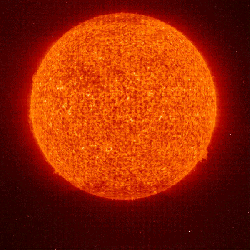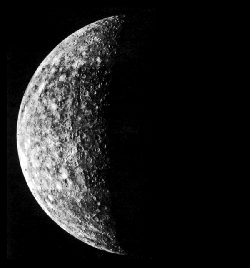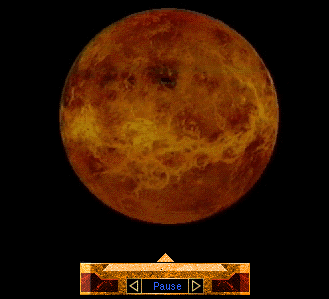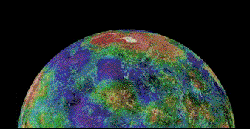
The core of the Sun rotates as a solid body.
The Sun
The Sun is by far the largest object in the solar system. It contains more than 99.8% of the total mass of the Solar System (Jupiter contains most of the rest).
The Sun is, at present, about 75% hydrogen and 25% helium by mass (92.1% hydrogen and 7.8% helium by number of atoms); everything else ("metals") amounts to only 0.1%. This changes slowly over time as the Sun converts hydrogen to helium in its core.
The outer layers of the Sun exhibit differential rotation: at the equator the surface rotates once every 25.4 days; near the poles it's as much as 36 days. This odd behavior is due to the fact that the Sun is not a solid body like the Earth. Similar effects are seen in the gas planets. The core of the Sun rotates as a solid body.
Conditions at the Sun's core are extreme. The temperature is 15 million Kelvin and the pressure is 250 billion atmospheres. The core's gases are compressed to a density 150 times that of water.
Only 45% of the surface of Mercury was mapped.
Mercury
In Roman mythology Mercury is the god of commerce and thievery, the Roman counterpart of the Greek god Hermes, the messenger of the Gods. The planet probably received this name because it moves so quickly across the sky.
Mercury has been known since at least the time of the Sumerians (3rd millennium BC). It was given two names by the Greeks: Apollo for its apparition as a morning star and Hermes as an evening star. Greek astronomers knew, however, that the two names referred to the same body. Heraclitus even believed that Mercury and Venus orbit the Sun, not the Earth.
Mercury has been visited by only one spacecraft, Mariner 10. It flew by three times in 1973 and 1974. Only 45% of the surface was mapped.
Venus Surface Feature Map (Director Animation )
LANSTAT image of the top hemisphere of Venus taken in 1995 .


